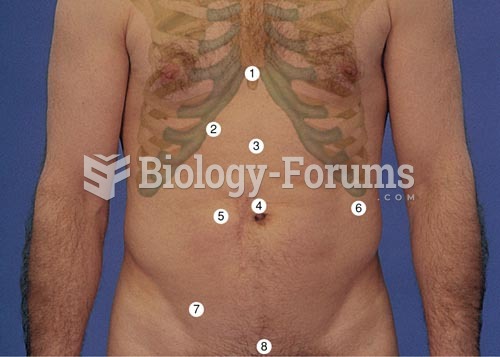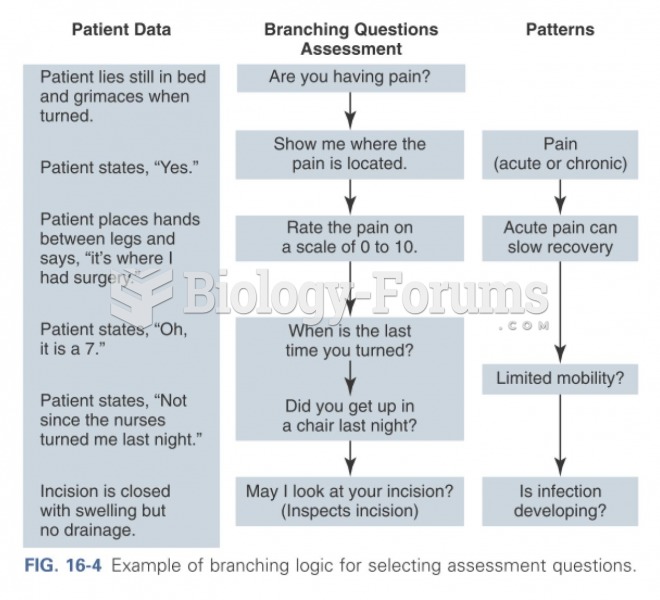|
|
|
Illness; diuretics; laxative abuse; hot weather; exercise; sweating; caffeine; alcoholic beverages; starvation diets; inadequate carbohydrate consumption; and diets high in protein, salt, or fiber can cause people to become dehydrated.
Interferon was scarce and expensive until 1980, when the interferon gene was inserted into bacteria using recombinant DNA technology, allowing for mass cultivation and purification from bacterial cultures.
Every 10 seconds, a person in the United States goes to the emergency room complaining of head pain. About 1.2 million visits are for acute migraine attacks.
About 600,000 particles of skin are shed every hour by each human. If you live to age 70 years, you have shed 105 pounds of dead skin.
Fewer than 10% of babies are born on their exact due dates, 50% are born within 1 week of the due date, and 90% are born within 2 weeks of the date.
 Abdominal Assessment Landmarks. When describing pathology of the abdomen, it is useful to use theses
Abdominal Assessment Landmarks. When describing pathology of the abdomen, it is useful to use theses
 These monolithic figures from Easter Island suggest the contemplative nature of philosophy, which ca
These monolithic figures from Easter Island suggest the contemplative nature of philosophy, which ca





